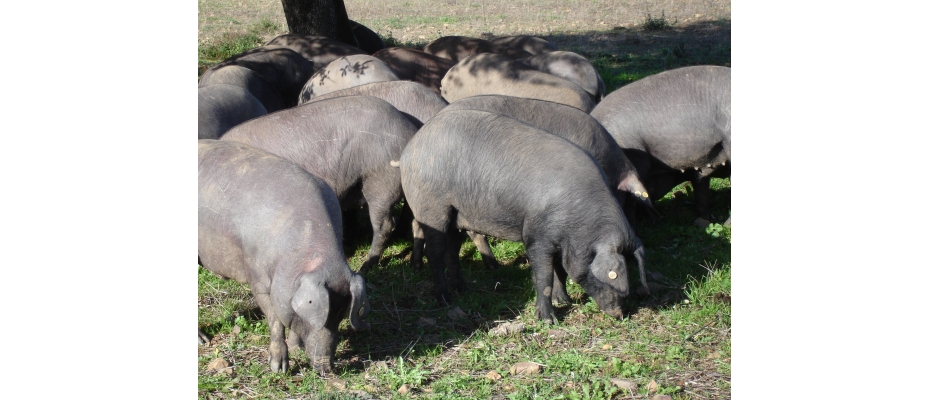
A team led by Miguel Pérez-Enciso, ICREA researcher at Universitat Autònoma de Barcelona (UAB) and at the Centre for Research in Agrigenomics (CRAG), has obtained the first partial genome sequence of an ancient pig. Researchers from the CNAG and the Institute of Evolutionary Biology (CSIC-Pompeu Fabra University) also participated in the study.
Extracted from a sixteenth century pig found at the site of the Montsoriu Castle in Girona, the data obtained indicates that this ancient pig is closely related to today's Iberian pig. Researchers also discard the hypothesis that Asian pigs were crossed with modern Iberian pigs. The study, published in _Heredity_, sheds new light on evolutionary aspects of pig species, and particularly on that of the Iberian breed, considered to be representative of original European Mediterranean populations.
The sample dates approximately from the years 1520 to 1550 and is previous to the introduction of Asian pigs in Europe, which were later crossed with local European breeds which are the origin of today's international pig species. The sample pig is contemporary to the beginning of America's colonisation.
“Although it is a very fragmented sample, the gene sequence offers very interesting information", Miguel Pérez-Enciso says. "First of all, we know it is not a white pig because it is missing a duplicated KIT gene which would make it this colour. This coincides with the majority of paintings from that period, in which the animal was always painted black or in reddish tones. We were also able to establish that it is very closely related to today's Iberian pig species, and specifically to the 'Lampiño del Guadiana' strain. We could say that the Iberian pig is very similar to the pigs which existed in the sixteenth century and no great changes have been registered in this genome. Therefore, more studies will be needed before we are able to distinguish the modern species from the older ones”.
The study indicates that the pig was a domestic pig, given that the sequence presents a series of markers typical of domestic pigs and which are very rare or absent in wild boars (the precursor animals to the domestic pig); moreover, this coincides with the historical registers of the castle, which clearly indicates that pig breeding was an important castle activity. Nevertheless, there is also evidence of occasional crossbreeding between wild boars and ancient pigs, as has happened between wild boars and Iberian pigs.
“This close relation between the Iberian pig, the European boar and the ancient pig confirms, as stated in previous studies, that crossbreeding between the Asian pig and modern Iberian pigs did not exist or was insignificant”, **Miguel Pérez-Enciso** points out.
The study also compared the ancient pig sample with the genome of modern pigs of different breeds, including 'Creole' pigs, which are presumably the descendents of the animals Spanish colonizers brought to America. Researchers demonstrate that this hypothesis is incorrect and that there is very little remaining of those first Spanish animals in today’s creole pigs, which were crossbred mainly with international pig breeds.
Work of reference:
Genome data from a sixteenth century pig illuminate modern breed relationships
Image: Iberian pigs (Comakut -Wikimedia Commons-)










